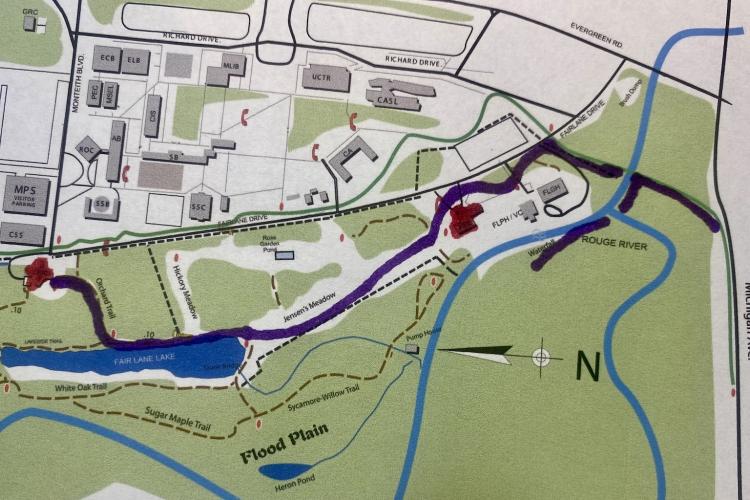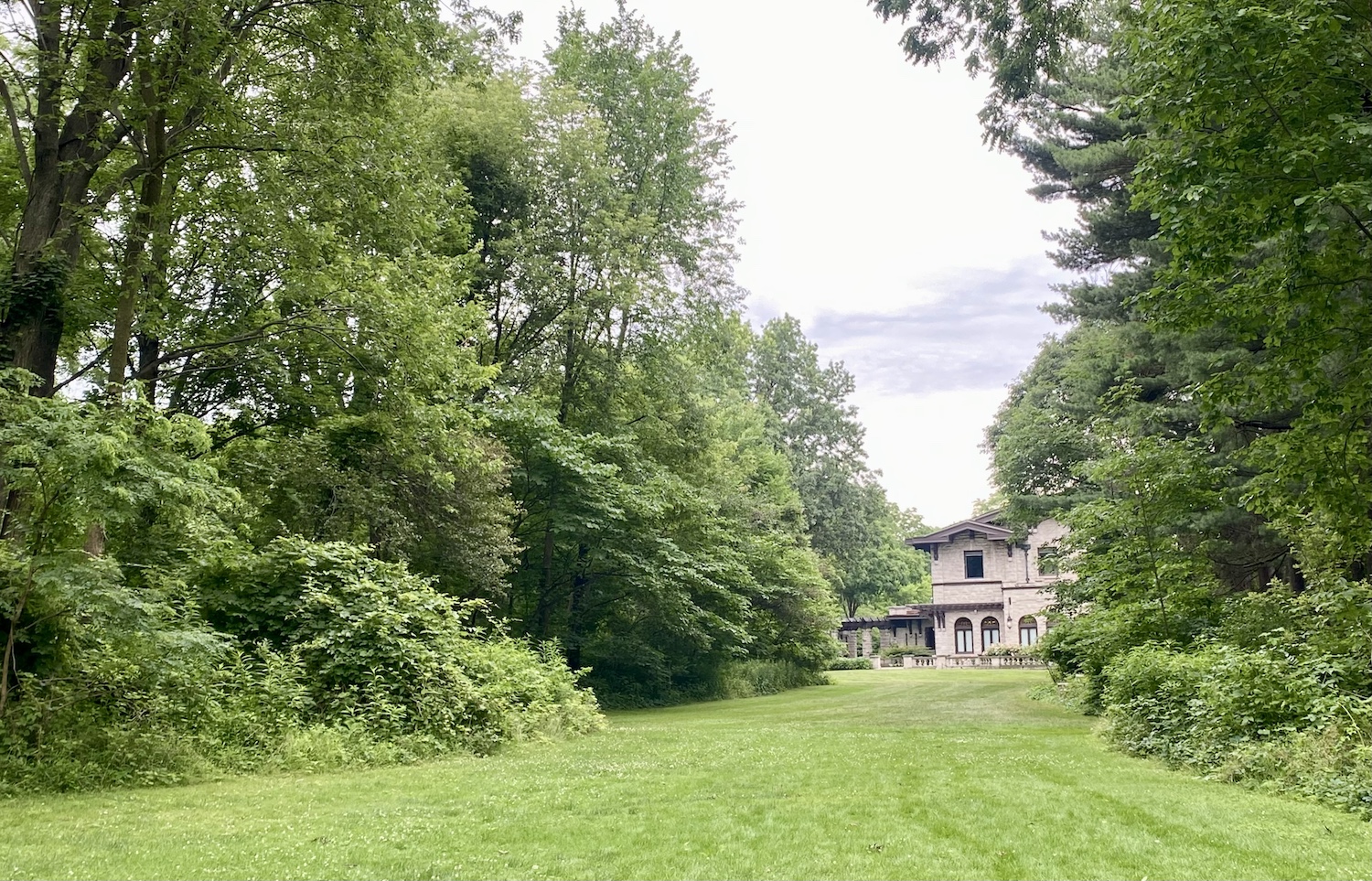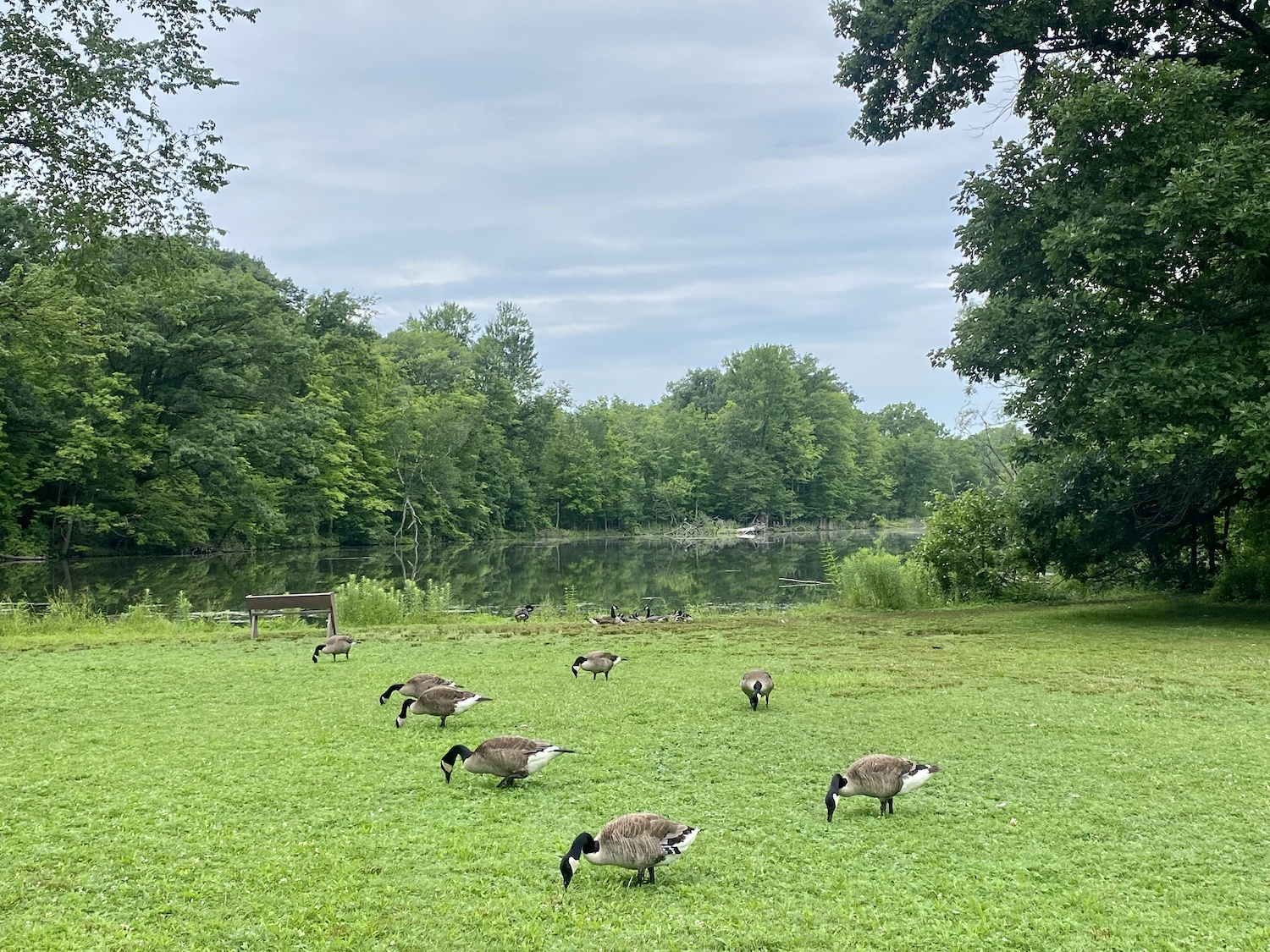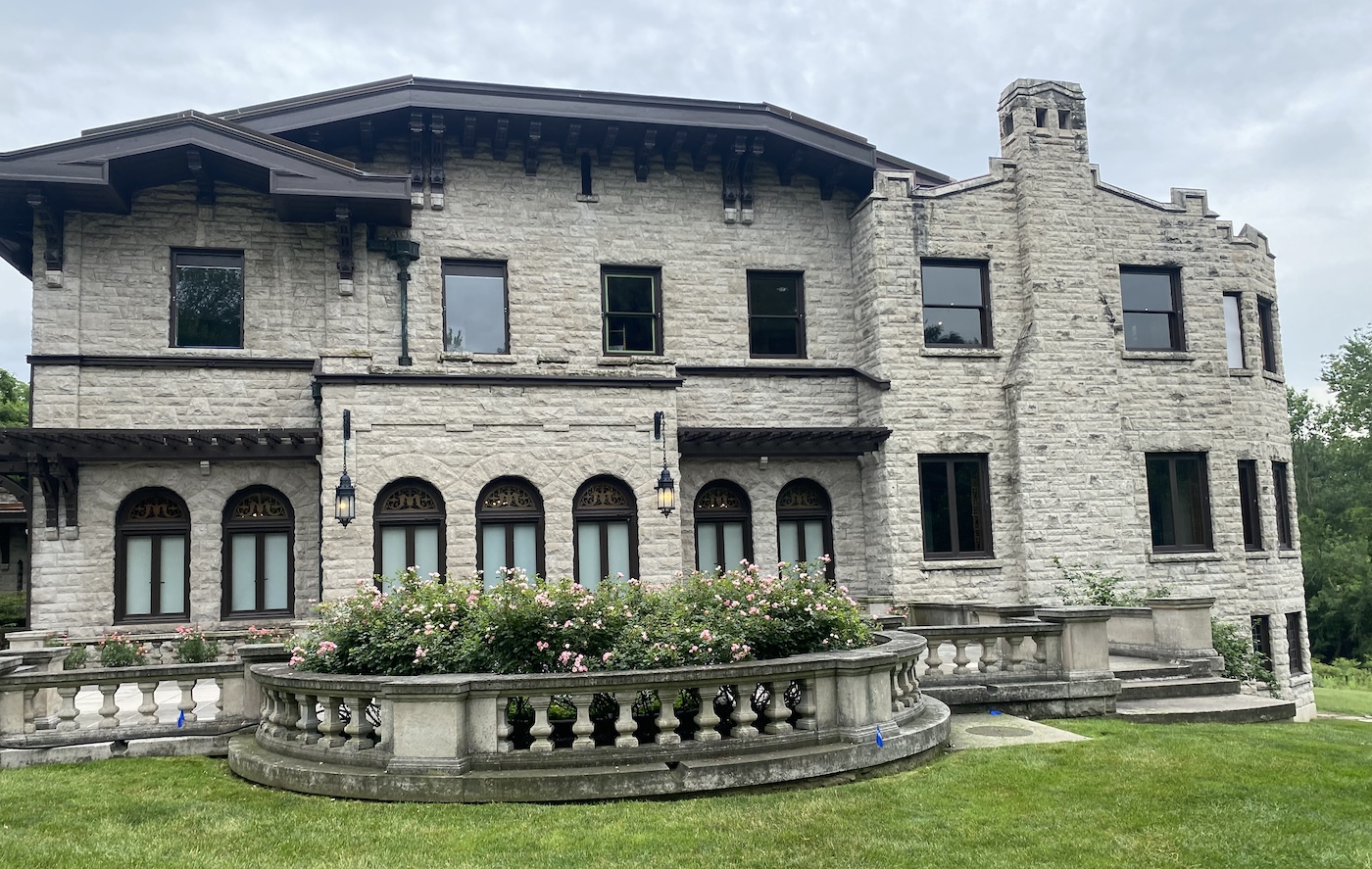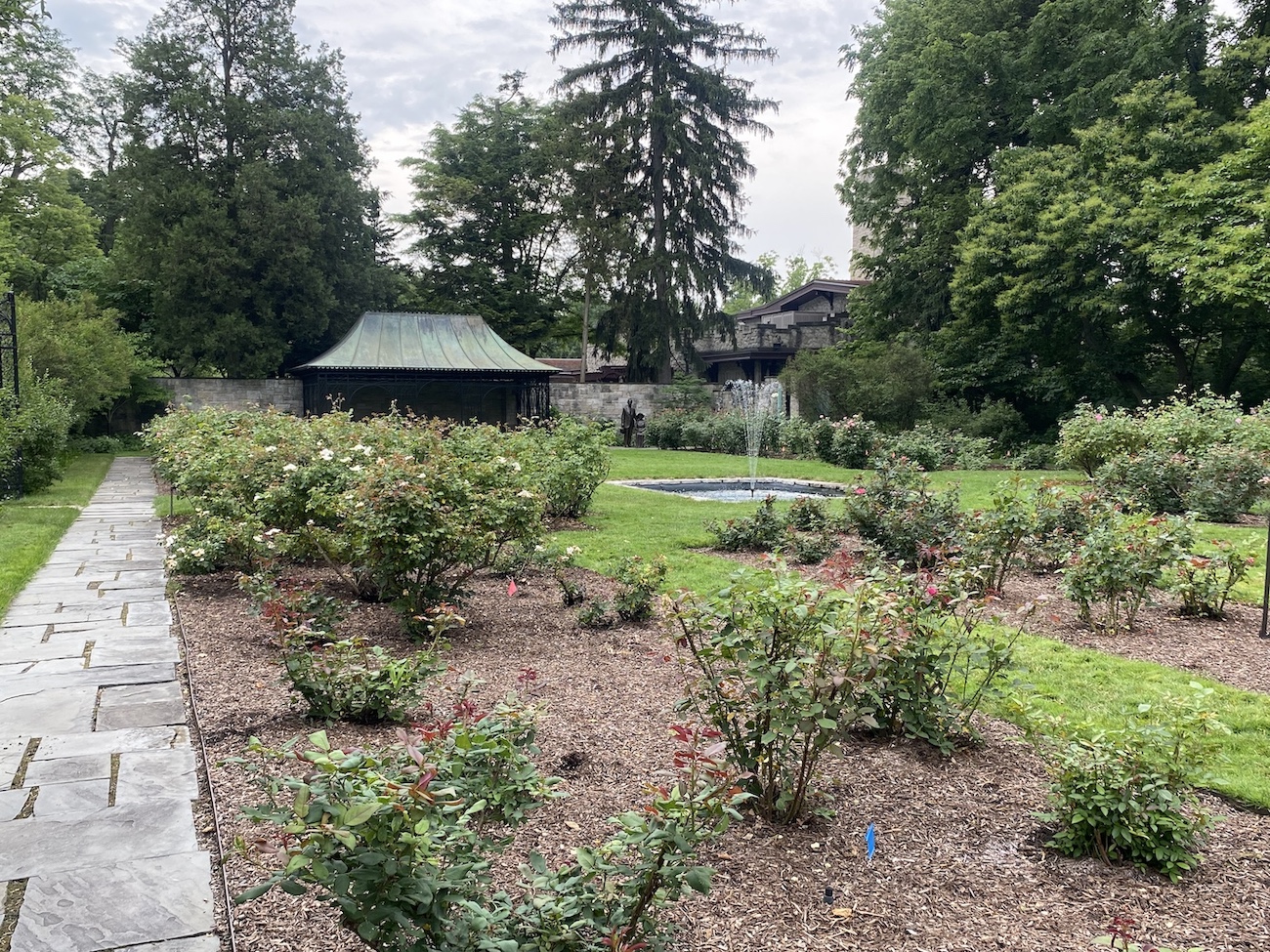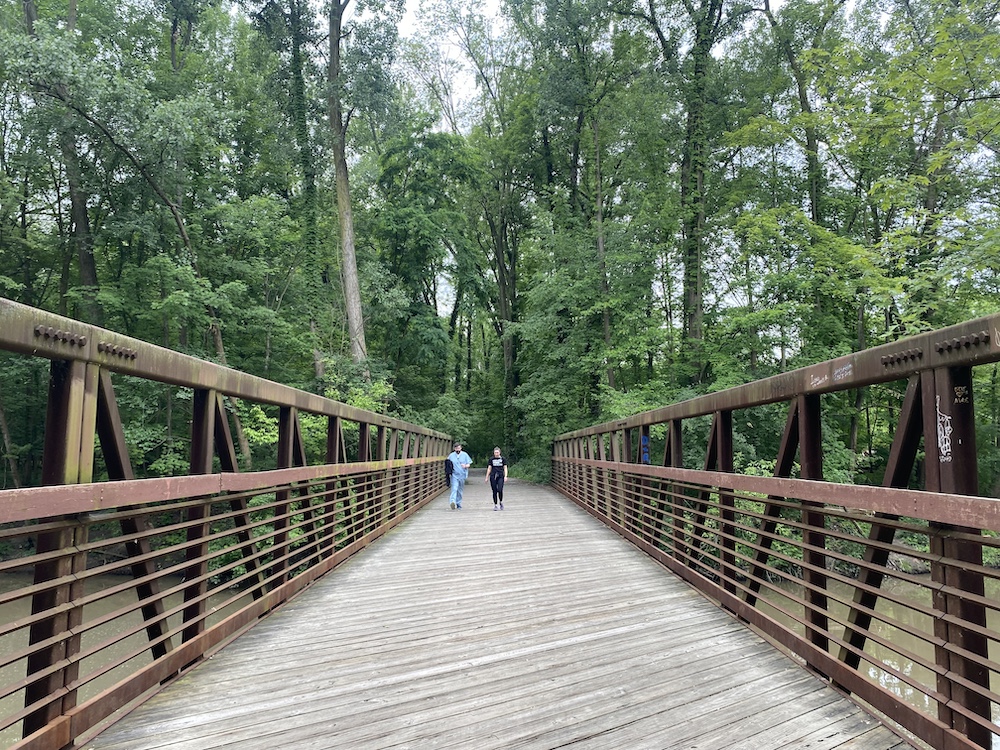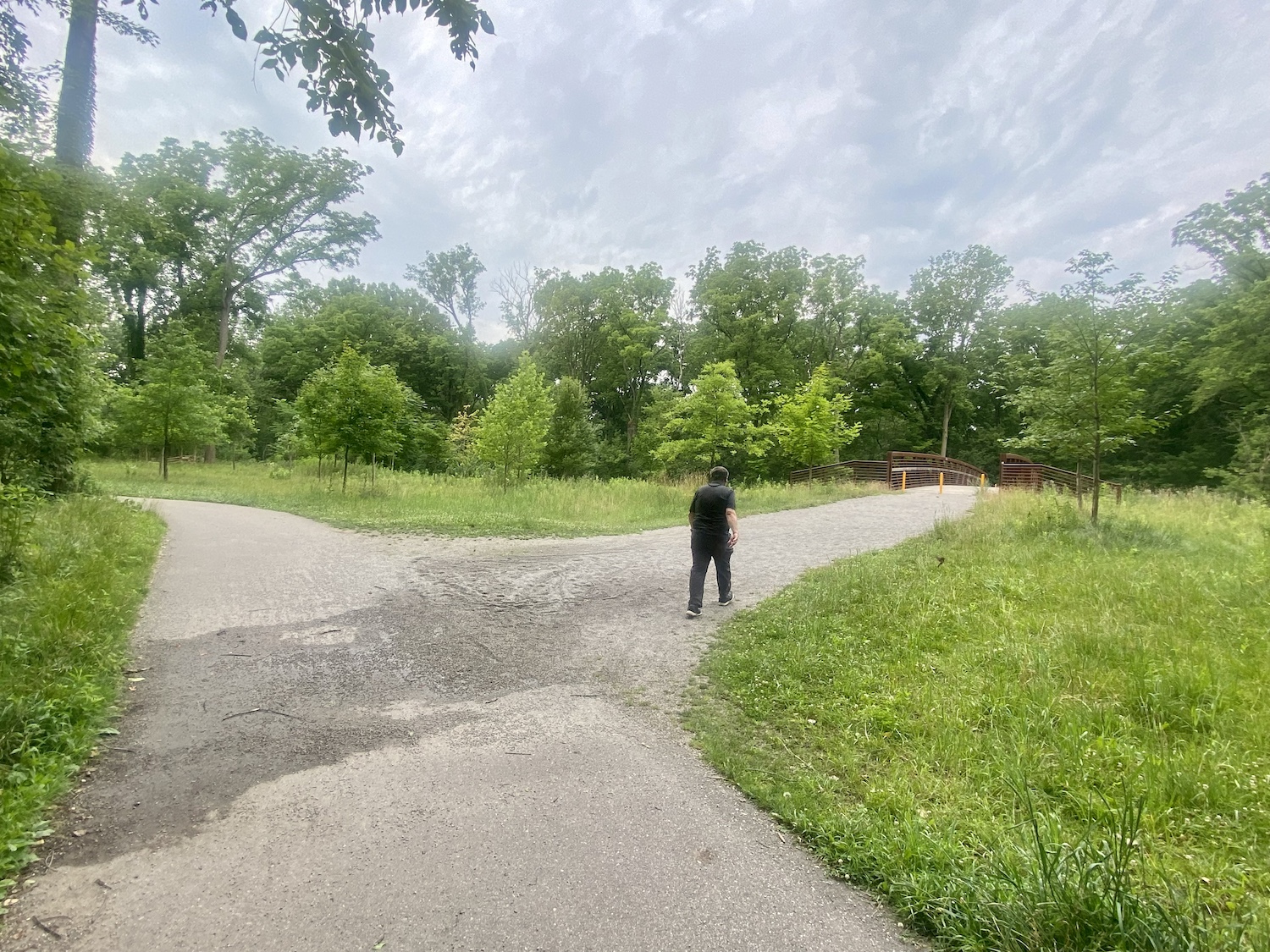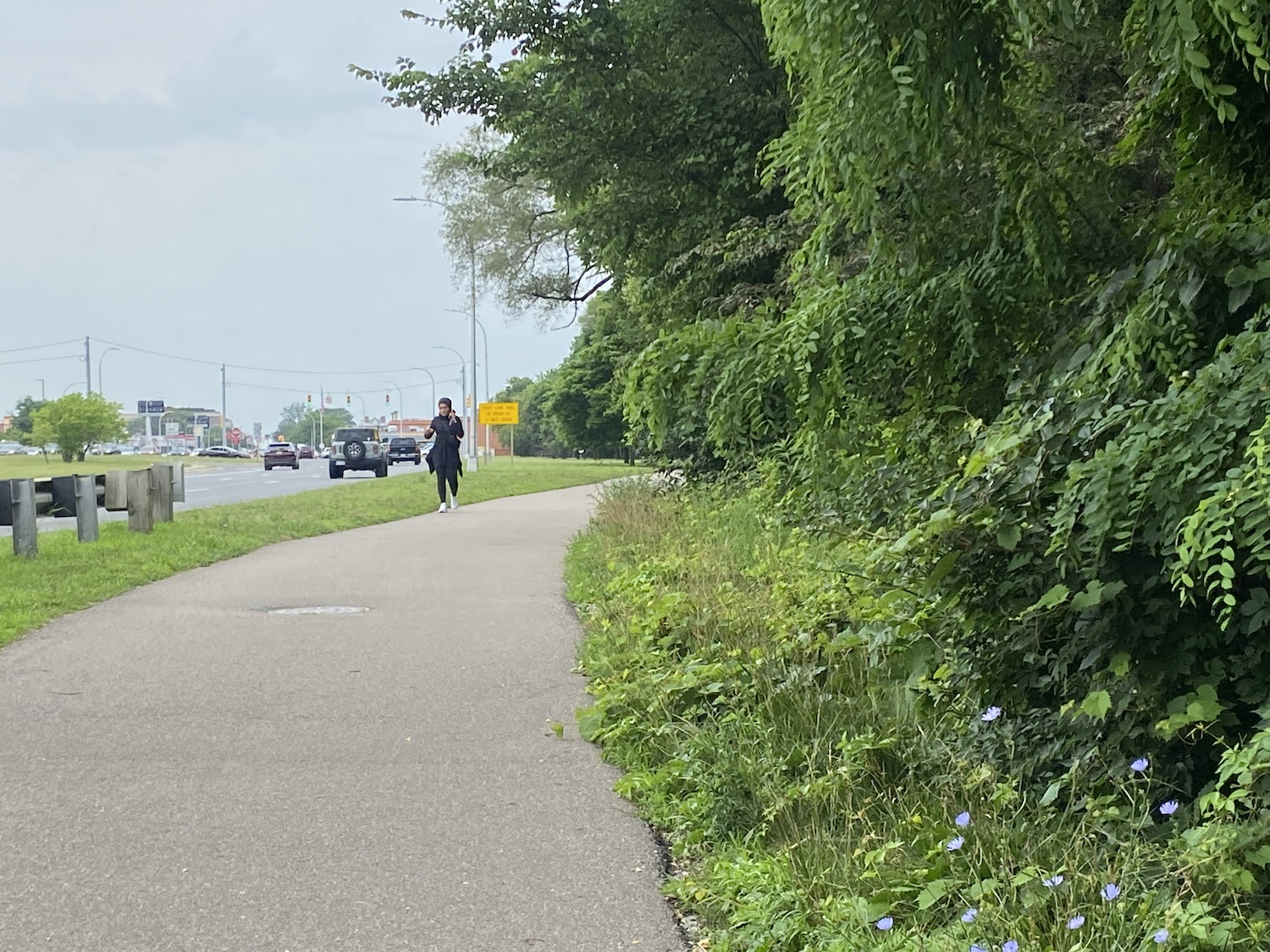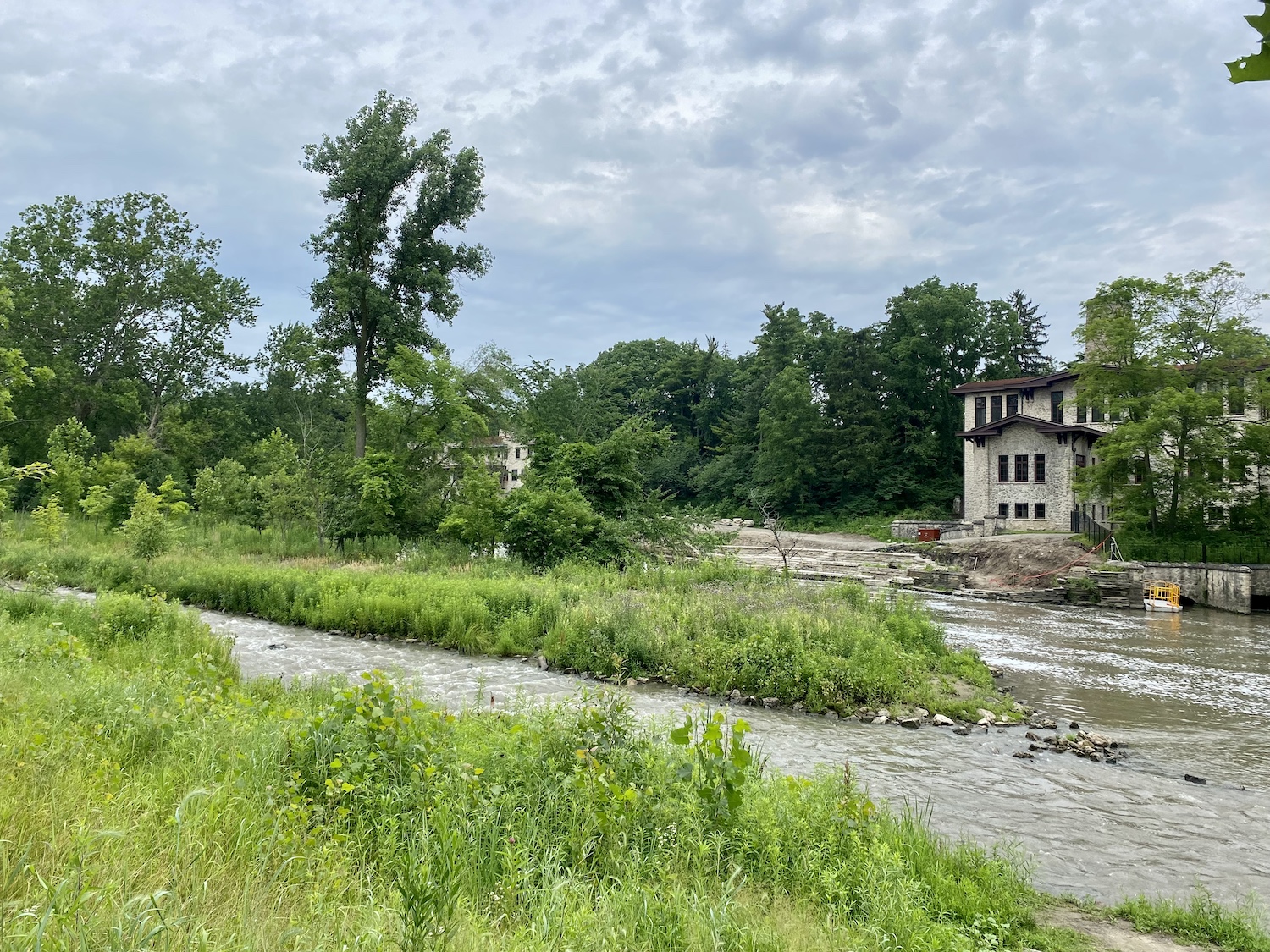
Fossils that dot building exteriors. A wrought iron-fenced rose garden that sits on top of underground tunnels. And a new water feature that helps the fish travel up the Rouge River from the Detroit River for the first time in more than a century.
These are a few of the intriguing sites along a trek from campus to the south end of Rouge Gateway Trail. First created in 2005, the gateway trail runs through campus and gives the community a scenic way to explore local history and a route to downtown West Dearborn.
“We have so many fascinating landscape features right in our backyard. Some are beautiful, some are functional, some are intriguing — and some have a little bit of everything,” says EIC Program Coordinator and Interpretive Naturalist Dorothy McLeer, who has led educational programs along this route. “If you want a shorter walk, you can start at the CASL Building or Fieldhouse and walk along Fair Lane Road from there. You’ll still see most of the sites I’m talking about today.”

